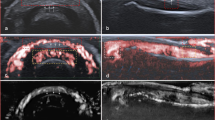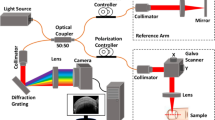Abstract
Observing and analyzing nailfold microvascular images are essential for evaluating human health, but effective analysis requires high-clarity images. Autofocus technology enables the efficient and convenient acquisition of high-quality images for clinical examinations. However, successful autofocus depends on the accuracy of the sharpness evaluation algorithm. Owing to the low contrast of nailfold microvascular images and the inevitable dithering artifacts and stray light produced during acquisition, existing algorithms cannot accurately evaluate sharpness, leading to autofocus failure. To address this problem, this study proposes a sharpness evaluation algorithm that uses histogram equalization to enhance the high-frequency information of the images, applies wavelet transform to reduce the influence of dithering artifacts and stray light, and calculates the edge gradient to evaluate sharpness quantitatively. Five mainstream evaluation algorithms were compared to validate the performance of the proposed algorithm, and the results show that it outperforms the others and accurately determines the clearest image. Compared with other algorithms, the clearest image exhibits the best visual effect, with a narrow width of the evaluation curve that is 27–37% higher. The algorithm proposed in this article has better real-time applicability.






Similar content being viewed by others
Data Availability
The basic data of this article will be shared with corresponding authors upon reasonable request.
References
Tian, J., Xie, Y., Li, M., Oatts, J., Han, Y., Yang, Y., Shi, Y., Sun, Y., Sang, J., Cao, K., Xin, C., Siloka, L., Wang, H., Wang, N.: The relationship between nailfold microcirculation and retinal microcirculation in healthy subjects. Front. Physiol. (2020). https://doi.org/10.3389/fphys.2020.00880
Grover, C., Jakhar, D., Mishra, A., Singal, A.: Nail-fold capillaroscopy for the dermatologists. Indian J. Dermatol. Venereol. Leprol. 88(3), 300–312 (2022). https://doi.org/10.25259/ijdvl_514_20
Li, Z., Shahbazi, M., Patel, N., O’Sullivan, E., Zhang, H., Vyas, K., Chalasani, P., Deguet, A., Gehlbach, P.L., Iordachita, I., Yang, G.Z., Taylor, R.H.: Hybrid robot-assisted frameworks for endomicroscopy scanning in retinal surgeries. IEEE Trans. Medic. Robot. Bion. 2(2), 176–187 (2022). https://doi.org/10.1109/tmrb.2020.2988312
Zhang, Y.P., Liu, L.Y., Gong, W.T., Yu, H.H., Wang, W., Zhao, C.Y., Wang, P., Ueda, T.: Autofocus system and evaluation methodologies: a literature review. Sensors Mater. 30(5), 1165–1174 (2018). https://doi.org/10.18494/sam.2018.1785
Ng, K., Neow, P.A., Ang, M.H.: Practical issues in pixel-based autofocusing for machine vision. Proc. IEEE Int. Conf. Robot. Automat. 3, 2791–2796 (2001). https://doi.org/10.1109/ROBOT.2001.933045
Xu, X., Wang, Y., Tang, J., Zhang, X., Liu, X.: Robust automatic focus algorithm for low contrast images using a new contrast measure. Sensors. 11(9), 8281–8294 (2011). https://doi.org/10.3390/s110908281
Yousefi, S., Rahman, M., Kehtarnavaz, N.: A new auto-focus sharpness function for digital and smart-phone cameras. IEEE Trans. Consum. Electron. 57(3), 1003–1009 (2011). https://doi.org/10.1109/TCE.2011.6018848
Narvekar, N.D., Karam, L.J.: A no-reference image blur metric based on the cumulative probability of blur detection (CPBD). IEEE Trans. Image Proc. 20(9), 2678–2683 (2011). https://doi.org/10.1109/TIP.2011.2131660
Khan, S.A., Hussain, S., Yang, S.: Contrast enhancement of low-contrast medical images using modified contrast limited adaptive histogram equalization. J. Medic. Imag. Health Inf. 10(8), 1795–1803 (2020). https://doi.org/10.1166/jmihi.2020.3196
Wu, Z.W., Tan, H.S., Luo, J.X., Liang, J.Z., Lin, J.A., Huang, A., Li, X.S., Wu, Y.X.: Hybrid enhancement algorithm for nailfold images with large fields of view. Microvasc. Res. 146, 104472 (2023). https://doi.org/10.1016/j.mvr.2022.104472
Kim, Y.T.: Contrast enhancement using brightness preserving bi-histogram equalization. IEEE Trans. Consum. Electron. 43(1), 1–8 (1997). https://doi.org/10.1109/30.580378
Gebremeskel, G.B.: A critical analysis of the multi-focus image fusion using discrete wavelet transform and computer vision. Soft. Comput. 26(11), 5209–5225 (2022). https://doi.org/10.1007/s00500-022-06998-w
Yang, C.P., Chen, M.H., Zhou, F.F., Li, W., Peng, Z.M.: Accurate and rapid auto-focus methods based on image quality assessment for telescope observation. Appl. Sci. Basel. 10(2), 658 (2020). https://doi.org/10.3390/app10020658
Shahid, M., Rossholm, A., Lovstrom, B., Zepernick, H.J.: No-reference image and video quality assessment: a classification and review of recent approaches. Eurasip J. Image Vid. Proc. 40, 1–32 (2014). https://doi.org/10.1186/1687-5281-2014-40
Mittal, A., Moorthy, A.K., Bovik, A.C.: No-reference image quality assessment in the spatial domain. IEEE Trans. Image Proc. A. 21(12), 4695 (2012). https://doi.org/10.1109/TIP.2012.2214050
Mittal, A., Soundararajan, R., Bovik, A.C.: Making a “completely blind” image quality analyzer. IEEE Sig. Proc. Lett. 20(3), 209–212 (2013). https://doi.org/10.1109/lsp.2012.2227726
Yang, J.Q., Zhu, G.P., Shi, Y.Q.: Analyzing the effect of JPEG compression on local variance of image intensity. IEEE Trans. Image Proc. 25(6), 2647–2656 (2016). https://doi.org/10.1109/tip.2016.2553521
Venkatanath, N., Praneeth, D., Chandrasekhar, B., Channappayya, S.S., Medasani, S.S.: Blind image quality evaluation using perception based features. Proc. IEEE 21st NCC. https://doi.org/10.1109/NCC.2015.7084843
Saad, M.A., Bovik, A.C., Charrier, C.: Blind image quality assessment: A natural scene statistics approach in the DCT domain. IEEE Trans. Image Proc. 21(8), 3339–3352 (2012). https://doi.org/10.1109/tip.2012.2191563
Yan, X.Y., Lei, J., Zhao, Z.: Multidirectional gradient neighborhood-weighted image sharpness evaluation algorithm. Math. Problems Engin. 2020, 7864024 (2020). https://doi.org/10.1155/2020/7864024
Wu, X., Zhou, H., Yu, H., Hu, R., Zhang, G., Hu, J., He, T.: A method for medical microscopic images’ sharpness evaluation based on NSST and variance by combining time and frequency domains. Sensors. 22(19), 7607 (2022). https://doi.org/10.3390/s22197607
Hurtado-Pérez, R., Toxqui-Quitl, C., Padilla-Vivanco, A., Aguilar-Valdez, J.F., Ortega-Mendoza, G.: Focus measure method based on the modulus of the gradient of the color planes for digital microscopy. Optic. Engin. 57(2), 1 (2018). https://doi.org/10.1117/1.OE.57.2.023106
Dong, W., Sun, H., Zhou, R., Chen, H.: Autofocus method for SAR image with multi-blocks. The J. Engin. 2019(19), 5519–5523 (2019). https://doi.org/10.1049/joe.2019.0463
Sparavigna, A.C.: Entropy in image analysis. Entropy 21(5), 502 (2019). https://doi.org/10.3390/e21050502
He, C., Li, X., Hu, Y., Ye, Z., Kang, H.: Microscope images automatic focus algorithm based on eight-neighborhood operator and least square planar fitting. Optik Int. J. Light Electron Optics. 206, 164232 (2020). https://doi.org/10.1016/j.ijleo.2020.164232
Funding
This work was supported by Guangdong Provincal Key Field R&D Plan Project (NO. 2020B1111120004, the National Natural Science Foundation of China under grant no. 62075042, the Science and Technology Program of Guangdong Province under grant no. X190311UZ190, and the 2022 Academic Fund of Foshan University.
Author information
Authors and Affiliations
Contributions
AH proposed this idea and mainly worked on the implementation, algorithm development, and testing. ZW reviewed the manuscript and made suggestions. HY and QY assisted in algorithm development. JLiang and JLin collected the required images for the experiment. MX and CY participated in image acquisition work. YW and XL have made contributions to general work supervision and sought funding to support research work. All authors contributed to the manuscript writing and review.
Corresponding author
Ethics declarations
Conflict of interests
The authors declare that they have no known competing financial interests or personal relationships.
Additional information
Publisher's Note
Springer Nature remains neutral with regard to jurisdictional claims in published maps and institutional affiliations.
Rights and permissions
Springer Nature or its licensor (e.g. a society or other partner) holds exclusive rights to this article under a publishing agreement with the author(s) or other rightsholder(s); author self-archiving of the accepted manuscript version of this article is solely governed by the terms of such publishing agreement and applicable law.
About this article
Cite this article
Huang, A., Wu, Z., Yin, H. et al. Sharpness evaluation algorithm for nailfold microvascular images. SIViP 18, 1515–1523 (2024). https://doi.org/10.1007/s11760-023-02873-9
Received:
Revised:
Accepted:
Published:
Issue Date:
DOI: https://doi.org/10.1007/s11760-023-02873-9




